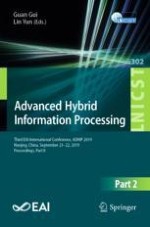This two-volume set LNICST 301 -302 constitutes the post-conference proceedings of the Third EAI International Conference on Advanced Hybrid Information Processing, ADHIP 2019, held in Nanjing, China, in September 2019. The 101 papers presented were selected from 237 submissions and focus on hybrid big data processing. Since information processing has acted as an important research domain in science and technology today, it is now to develop deeper and wider use of hybrid information processing, especially information processing for big data. There are more remaining issues waiting for solving, such as classification and systemization of big data, objective tracking and behavior understanding in big multimedia data, encoding and compression of big data.
